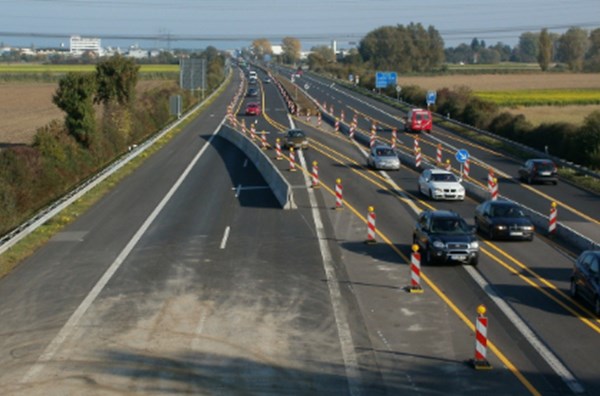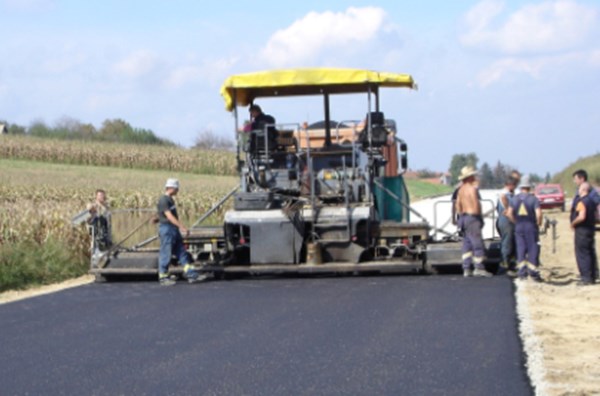Build and manage better road networks
- Home
- HDM-4 Updates
- Software Updates
- HDM-4 Version 2.05 Upgrade
HDM-4 Version 2.05 Upgrade
HDM-4 Version 2.05 Upgrade is now available free to registered HDM-4 Version 2 licence holders by downloading from the HDMGlobal website. The upgrade is aimed at resolving a number of issues that affect the results of the software, improvements to the software licencing process and a widening of the types of licences available.
NOTE: This update includes a major change to the software licence activation within the software. After installing the update you will be required to reactivate the software. If the software is not activated it will automatically revert to a Demonstration mode of operation and functionality will be reduced. The team handling the activation requests will respond to requests as soon as possible but you should plan when it is appropriate to update to allow for this reactivation process. Further instructions on the reactivation process will be provided after registering to receive the update.
1) CONFIGURATION: HDM-4 stores a number of settings in an initialisation file that is located in the windows
directory. Some users operating the software with restricted privileges did not have access to write to this file and their settings could not be retained between sessions. This has been resolved by storing these settings in the users registry space. Users updating their software will may need to reconfigure their settings using the HDM-4 Options tool, which has also been updated.
2) WORKSPACE CONFIGURATION: The default installation of HDM-4 placed the workspace and associated configuration file in the same directory as the application. Some users operating the software with restricted privileges did not have access to write to files in this location and they could not gain access to the data without an administrator changing their permissions. This has been resolved by allowing the user to select the location where these files are located during installation, and can be configured using the HDM-4 Options tool.
3) SOFTWARE ACTIVATION: A new software licensing scheme has been introduced in HDM-4 Version 2.05. The introduction of this licensing scheme, produced by TRL Software, better supports the introduction of new software licence types (Demonstration/Educational/Full), and also provides a floating network licence scheme for institutions with these licence requirements. By default the software will now install as a Demonstration version and will require further activation to gain access to the full features of the software. See www.hdmglobal.com for details about the different licence types and their restrictions.
4) SOFTWARE ACTIVATION: PLEASE NOTE: the new software activation scheme is NOT compatible with the previous codes issued for HDM-4 Version 2.04 and earlier. To continue to use the updated software in its full licensed state you will need to re-activate the software. Therefore you should consider an appropriate time to update the software so as not to interrupt your project.
5) ACTIVATION: In some circumstances the Dynamic Link Libraries (DLLS) used by HDM-4 may issue an activation failure warning, but the main application runs normally. This issue has been resolved.
6) ALTERNATIVES: When an alternative had an improvement assigned with a post-improvement maintenance standard defined, the copy function did not function correctly. Any changes to the post-improvement standard where also made to the alternatives that had the detailed pasted to them. This error has been corrected, but users will need to re-copy the assignments to ensure the analysis assignments are updated.
7) ASSET VALUATION: Attributes which are specific to the valuation method selected (Condition/Production based) are sometimes lost when the selected option is changed. This has been resolved so that previously entered data is retained.
8) IMPORT EXPORT: When a Vehicle Fleet is imported with a name that already exists in the workspace, the option to overwrite the existing Vehicle Fleet is now given. The existing vehicle and traffic growth data is overwritten with that in the import data for items with the same name and vehicle category. Existing data that is not overwritten is retained, and new data is added if it does not currently exist.
9) IMPROVEMENTS: After a bituminous upgrading has been applied to an existing bituminous pavement the contribution of CBR to the pavement strength was not included. This resulted in the section having a lower pavement strength than was intended because the sub-grade contribution to the after-works SNP was not included. This error has been corrected.
10) PROGRAMME & STRATEGY ANALYSIS: The NPV/CAP indicator was incorrectly calculated for the Base Alternative. The NPV/CAP should be zero for the base alternative as the NPV will be zero. This error has been corrected.
11) ROAD NETWORK: When viewing the "other" attributes for a concrete section in the grid view, the shoulder attributes where not being displayed correctly. This error has been corrected.
12) ROAD NETWORK: Changes to a concrete section's Shoulder Type were not being saved when it was changed on the "Other" tab page. This error has now been fixed.
13) ROAD NETWORK: If a section has "unassigned aadt" it is not always displayed in the correct place on the traffic tab pages. This error has been corrected.
14) ROAD NETWORK: Changing the Vehicle Fleet assigned to a Road Network did not update the network's traffic or the traffic (generated and diverted) defined in an analysis using the road network. This has been corrected.
15) ROAD NETWORK: Deleting a vehicle fleet that was assigned to a Road Network did not update the associated traffic for the sections and any analysis that was using the Road Network. This has been corrected.
16) REPORTS: A New Section construction was sometimes reported in the incorrect project alternative in the timing of works by section report. The resulted in the details and summary totals being incorrect. This has been resolved.
17) VEHICLE FLEET: Deleting a vehicle from a fleet assigned to a network, that was used in an analysis, did not update any diverted and generated traffic defined. This error has been corrected.
The update also includes the changes in HDM-4 Version 2.04 :
HDM-4 Version 2.04 Upgrade now includes full support for the French language (documentation/user interface/reports).
The new issues that are included in the upgrade are indicated below:
1) ACTIVATION: In some circumstances the Installation ID would change resulting in failed activation of the software. Typically this occurred to users connecting using different network methods (WiFi, LAN, etc) or users connecting using a VPN. The activation process has been improved to take account of these possibilities, and users experiencing problems will require a new activation ID.
2) ALTERNATIVES INTERFACE: Editing items in the detailed grid view, for instance, alternative names and standard's effective year resulted in an error if the user clicked on the navigation tree to exit the editing. This error has been corrected.
3)3) CALIBRATION SETS: The calibration attribute Kgr displayed an incorrect status and error message. This has been corrected.
4) CALIBRATION SET: When a concrete calibration item is created, no default values are provided. This has been updated so default values are provided similar to those provided for the other surface classes.
5) CALIBRATION SETS: Changes to the concrete parameters Retraction Coefficient and Thermal Expansion were not retained. This error has been corrected.
6) CLIMATE ZONES: The message informing the user that the mean monthly rainfall is outside of the recommended range was not correctly formatted. This error has been corrected.
7) ENERGY: The log file entry for the computation of the annual average fuel energy consumption of a vehicle (ENFUELk) was not being output correctly. This has now been corrected.
8) IMPORT EXPORT: If a Road Network import file was defined with a Vehicle Fleet that did not exist in the current workspace, no validation error would be produced and it would be reported that the Road Network had been imported, even though it had failed due to the missing Vehicle Fleet. The Vehicle Fleet field is now validated and an import error reported if the referenced Vehicle Fleet does not exist.
9) IMPORT EXPORT: If a Road Network import file was defined with a Calibration Set that did not exist in the current workspace, no validation error would be produced and it would be reported that the Road Network had been imported, even though it had failed due to the missing Calibration Set. The Calibration Set field is now validated and an import error reported if the referenced Calibration Set does not exist.
10) IMPORT EXPORT: If a user had selected to include Generated Traffic in a Project Analysis, but had not defined any details, exporting the analysis would fail and generate an error. This has now been corrected.
11) IMPORT EXPORT: The attribute ELANES was not exported or imported for unsealed sections. This has been corrected.
12) IMPROVEMENTS: After a pavement reconstruction was applied the contribution of CBR to the pavement strength was included. This resulted in the section having lower pavement strength. This error has been corrected.
13) IMPROVEMENTS: The default after-works roughness was incorrectly defaulting to 2.8IRI. The after-works roughness should depend upon the after-works pavement type ((AM = 2.0IRI, ST = 2.8IRI). This error has been corrected.
14) MCA: If a Project, Alternative or a Section's ID contained a ' character, MCA would report an error and a Multi-criteria Analysis could not be performed. This error has been corrected.
15) PROJECT ANALYSIS: When copying a Project Analysis, the Sensitivity Analysis factors where not being copied correctly. This has now been fixed.
16) PROJECT ANALYSIS: When performing an Analysis by Project with some sections excluded from the study, the economic analysis results where sometimes incorrect, and some economic reports where not displayed correctly. This has been resolved.
17) PROJECT/PROGRAMME/STRATEGY ANALYSIS: When creating a new analysis the user is required to select a Road Network and a Calibration Set from a drop down list. If the item's name was long it was truncated. This has been resolved by adjusting the width of the list based on the names to be displayed.
18) PROJECT ANALYSIS: When an economic analysis was performed where sections had been excluded from the analysis, the results where not always correct, and some reports failed to display correctly. This error has been corrected.
19) PROGRAMME ANALYSIS: When > 1000 sections selected the number of selected sections was not displayed correctly. This has been corrected.
20) PROJECT/PROGRAMME/STRATEGY ANALYSIS: If a section was opened for editing from the network selection screen project/programme/strategy analysis and the road class or surface class changed, the network selection screen was not updated to reflect this. This error has been corrected.
21) PROGRAMME/STRATEGY ANALYSIS: The Unconstrained/Optimised Work Programme dialog did not state the work costs are displayed in the Works currency units. This could lead to confusion when the work currency and output currency were different and the conversion rate was not equal to 1. The currency unit is now indicated.
22) PROGRAMME/STRATEGY ANALYSIS: In circumstances where the internal optimisation method was used and the works currency and output currency were different incorrect optimisation results were obtained. The optimisation was assuming both currencies were always the same. This error has been corrected.
23) PROGRAMME/STRATEGY ANALYSIS: When the internal optimisation method was used and a budget optimisation performed, a budget period from each budget scenario would sometimes be automatically removed. This error has been corrected.
24) REPORTS: The optimum section alternatives reports for programme and strategy analysis were not displaying the initial AADT correctly. This has been corrected.
25) REPORTS: The optimised work programme reports (by section and by year) were not displaying the cumulative costs per budget scenario correctly. This has been corrected.
26) REPORTS: The work costs reports displayed a summary table with a sum of the annual work costs for alternatives. The works costs were incorrectly summed for all sensitivity scenarios. These reports have been corrected to display one summary table per sensitivity scenario.
27) REPORTS: The after works adjusted pavement strength (SNPK) was not being calculated and therefore was not displayed in the bituminous pavement reports correctly. This has been corrected.
28) ROAD NETWORK: The grid view for unsealed sections did not display the ELANES attribute. This has been corrected.
29) STRATEGY ANALYSIS: When copy an existing Strategy Analysis the target IRIs, if specified, where not copied. This has been corrected.
30) STRATEGY ANALYSIS: Incorrect error message displayed if trying to perform a budget optimisation before performing an analysis. This has been corrected.
31) WORK ITEMS: The structural deformation calibration attribute was inconsistently described as "structural deterioration" attribute. To be consistent with the documentation this has been changed.
32) WORK ITEMS/IMPROVEMENT STANDARDS: When viewing the after works bituminous calibration factors for a work item or improvement standard no prompt messages where displayed. This has been corrected.
33) WORK ITEMS: The calibration attribute for Rut Depth Standard Deviation (Krds) could not be set as it would take on the value entered for Surface Wear. This error has been corrected.
The update also includes the changes in HDM-4 Version 2.03 :
1) ENERGY CONSUMPTION: The calculation of the energy consumption of work items did not correctly use the energy units in which the usage was defined.
2) ENERGY CONSUMPTION: The Energy Usage defined for an improvement reconstruction was used to calculate the energy usage for a maintenance reconstruction work item. This error has been corrected.
3) MULTI-CRITERIA ANALYSIS: The data used in MCA if the "Comfort" criterion was selected, and the mode of analysis was "analysis by section" was not correct. This has been corrected.
4) MULTI-CRITERIA ANALYSIS: The multi-criteria analysis did not take account of which criterion was selected as the base criterion. This could lead to incorrect results. This has been corrected.
5) RUNDATA: The average IRI for a section over the analysis period is not calculated correctly. This has been corrected.
6) WORK ITEMS: The works quantity for the maintenance reconstruction work item was being reported as 0 m^2. This has been corrected and the correct area of reconstruction is now reported.
7) ASSET VALUATION: The units for the replacement cost was not indicated. The message has been improved to state that the replacement cost is for the whole section.
8) DEFAULT WORK COSTS: The maximum cost for the work items has been increased to allow a larger default cost to be entered.
9) DEFAULT WORK & ENERGY COSTS: The units for the energy usage could not be changed. This has now been corrected.
10) DEFAULT WORK & ENERGY COSTS: The classification of the operations has been improved by clearly identifying the maintenance and improvement items.
11) MULTI-CRITERIA ANALYSIS: The results dialog for Multi-criteria Analysis (MCA) did not display the project alternative/section alternative name so it was difficult to interpret the results. The display of the results has been improved to display the name of the alternative in the column header and as a tool-tip.
12) IMPROVEMENT STANDARDS: The operation types NMT Lane Addition, and NMT Lane Upgrading do not require the user to define a traffic flow period. However, the analysis input validation states that one must be defined. This error has now been corrected.
13) PROGRAMME ANALYSIS: The scrollbar in the grid displaying the sections within a group was not adjusted for the number of selected/available sections. This has been corrected.
This version also includes the update in HDM-4 v2.02:
1) WORK ITEMS: The preparatory work quantities and costs were incorrectly calculated for resealing, overlay, and inlay operation types. This resulted in the preparatory costs being many times higher than expected, therefore effecting the results of the economic analysis of studies. These errors have now been corrected and it is recommended that studies are re-run to determine the impact of the corrected calculations.
2) ASSET VALUATION: An omission was found in the Asset Valuation specification which resulted in the asset value of a pavement being incorrectly computed following an improvement standard. The specification has been amended and the software implementation updated accordingly.
3) ALTERNATIVES INTERFACE: Double-clicking on an improvement standard assignments name to display the details could result in the system crashing in some situations. This has been corrected.
4) ASSET VALUATION: Some input values were limited to 99.99%. This has been corrected to allow the user to enter values between 0 and 100%
5) ASSET VALUATION: The component age year was not set to a default value when a new section was created. This resulted in an error message when the user moved away from the screen even if they made no changes. This parameter is now initialised but should be reviewed by the user when entering asset valuation data.
6) IMPORT EXPORT: For unsealed work items the final gravel thickness and initial roughness parameters were not being imported/exported correctly. This has been corrected.
7) IMPORT: When importing work standards the option to overwite all New Construction Section was displaying an incorrect message prompt, and did not operate correctly. This has been corrected.
8) NEW CONSTRUCTION SECTIONS: It was not possible to change the new construction section's Accident Class. This has now been corrected.
9) VEHICLE FLEET: If the user had not defined some text for a vehicle type's description an error would be received when importing or exporting the vehicle fleet. This error has been corrected.
10) DATA MIGRATION TOOL: If the original workspace had a vehicle fleet in which a vehicle type did not have any text defined for its description field an error would be generated during the migration process, and the vehicle fleet and associated data would not be migrated correctly. This error has been corrected.
This version also includes the update in HDM-4 v2.01:
1) DATA MIGRATION TOOL: The conversion of new Roughness calibration factors are not treated consistently in calibration and work items. The tool has been updated to ensure the factors are treated consistently and are initialised with a default value of 1.0.
2) WORKSPACE: Using the 'Recent Workspaces' menu item to select a previously opened workspace caused a system error. This has been fixed.
3) ROAD NETWORK: Only an integer number could be entered for the section's vehicle AADTs on systems that had a regional setting using a comma for a decimal separator. This error has been corrected.
4) ROAD NETWORK: In certain circumstances, changing a sections surface class would cause HDM-4 to crash. This error has been corrected.
5) ROAD NETWORK: After changing a section's surface class no condition data was present. This error has been corrected.
6) ROAD NETWORK: For a bituminous section, after selecting method [2] to calculate SNP the results were not shown and method [1] remained selected. This error has now been corrected.
7) ALTERNATIVES INTERFACE: It was not possible to deselect the inclusion of generated traffic and benefits and costs associated with an improvement standard. This error has been corrected.
8) ALTERNATIVES: After changing the start year for a New Section, its name was incorrectly displayed in the alternatives navigation pane. This error has been corrected.
9) MULTI-YEAR FORWARD PROGRAMMING: The salvage value was not being calculated and included in the analysis. This error has now been corrected.
10) MULTI-YEAR FORWARD PROGRAMMING: When performing a MYFP with economic analysis the Road User Costs where not being calculated correctly. This resulted in incorrect economic indicator and work programme results. This error has now been corrected.
11) BUDGET OPTIMISATION: Analyses that exceeded the limits for performing budget optimisation using the EBM-32 method (see HDM-4 documentation for more details) did not produce the desired optimisation results. This error has now been fixed.
-
Find out about the technical support service offered by HDMGlobal to help users use HDM-4 effectively.
-
For existing HDM-4 users, view the latest software release and the changes made before registering to receive the updates.
-
Find out about HDM-4 training courses offered by HDMGlobal and their partner organisations and other related events.








